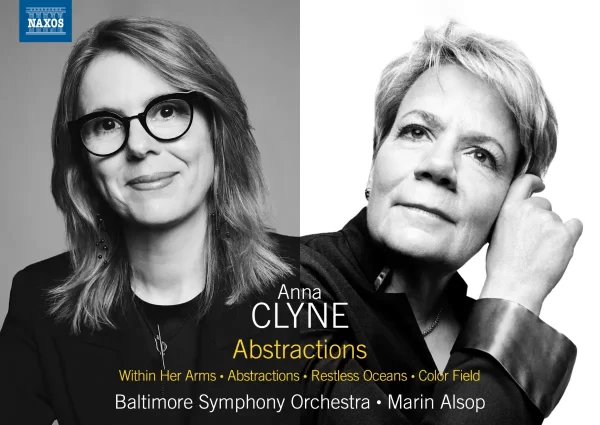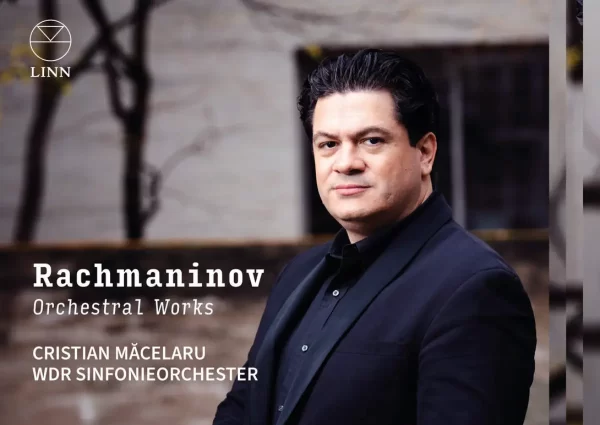In 2022 I wrote a glowing review of these same forces performing the symphonies of Saint-Saëns (Warner Classics). The same partnership now appears on this DG with Enescu’s three published symphonies. As Mǎcelaru points out in his thoughtful introductory note, France became Enescu’s adopted home country, and his music often speaks with Gallic structures, harmonies, and colors. How appropriate, then, to have a Rumanian conductor leading a French orchestra in this repertoire.
Enescu’s first symphony is an appealing mix of influences. His thematic treatment at times reminds one of Brahms, while the sheer weight of the sound might reflect Wagner. But its three-movement construction (and thematic treatment) also connects this music to Franck and Dukas. There are earlier performances of these works that allow the music to seem episodic, more tone poem than symphony, but a strength of these new performances is Mǎcelaru’s tempos, which always seem spot on. He is also excellent at ensuring Enescu’s more heroic music (such as the opening closing of the first movement) are noble and powerful without ever becoming bombastic.
The slow movement is richly languorous, its harmonies and orchestration sometimes Ravelian, though more often the music’s modality and exoticism reminded me of Florent Schmitt. The Rondo is brilliantly played, and masterfully shaped. In my review of their Saint-Saëns, I suggested there were times when the music making was too careful, as if conductor and orchestra were still becoming accustomed to one another; here I sense a true partnership in which the orchestra fully understands and believes in Mǎcelaru’s interpretation.
Yehudi Menuhin described the second symphony as a masterpiece, and this performance certainly backs up that description. Its opening burst of energy is positively Straussian (Ein Heldenleben specifically), leading into a movement of strong contrasts between music of athletic bio and gentler, more sensuous music, which bring gorgeous playing from the first chair woodwinds. Strings are wonderfully agile, and every orchestra color glistens. The second movement is particularly sumptuous, Mǎcelaru giving the opening clarinet solo plenty of room to shape phrases. The last movement opens with a slow, morose march (reminiscent of Britten’s “War Requiem”), followed by an Allegro Vivace in which themes are transformed with shifting changes in timbre. The opening’s uncertainty is eventually overcome with a heroic, joyful Straussian coda.
The third symphony, written for a huge orchestra with a substantial percussion section, can take on an opaque texture (as sometimes happens in Rozhdestvensky’s Chandos recording). That is never the case here. Although the first movement follows the outlines of Sonata form, the structure seems more overtly emotional, moments of struggle and angst interrupted by calmer, sweeter interludes. Mǎcelaru keeps it moving, and ensures its sprawling shape has a sense of organic inevitability.
The second movement is not slow as expected; instead, Enescu writes a demonic scherzo, surely reflecting the time of its composition (May 1916, just before Romania entered the First World War, to August 1918). This music of terrible rage and brutality, terrifically realized in this performance, the brass really snarling. The final movement, marked Lento, has far more lyricism as it struggles from a forlorn emptiness to something more hopeful. The refined colors and wordless chorus recall Debussy, which plays to the strengths of this orchestra. Again, the kaleidoscopic shifting of colors is beautifully realized and balanced by orchestra and conductor. Mǎcelaru and his players fully reveal the music’s desperate search for faith and resilience in a time when such ideals were in short supply.
The two Romanian Rhapsodies are wonderfully played. The first is Enescu’s best known work, and Mǎcelaru and his French players clearly tap into the 19-year-old composer’s love of country. I first learned these works through Neeme Jarvi’s more rambunctious readings with the Royal Scottish Symphony Orchestra, but Mǎcelaru strikes an ideal balance between energy and refinement in the first rhapsody, tapping into the deeper emotions of the more reflective second.
DG’s recordings, made in the Auditorium de Radio France in September 2022, and June and July 2023 are very fine, the clarity almost clinical at times. A little more room ambiance might have warmed the overall orchestral sound. Nevertheless, such transparency allows us to hear the inner workings of even the densest passages of the symphonies. Măcelaru’s thoughtful introduction and Rob Cowen’s brief but informative notes seal the deal on a set that is perhaps the finest of those works available.


Check offers of this album on Amazon.
Album Details |
|
|---|---|
| Album name | George Enescu – Symphonies 1-3 |
| Artist | Cristian Mǎcelaru – Conductor |
| Artist | Orchestre National de France |
| Label | Deutsche Grammophon |
| Catalogue No. | DG 4865505 |
| Amazon Music link | Stream here |
| Apple Music link | Stream here |

















